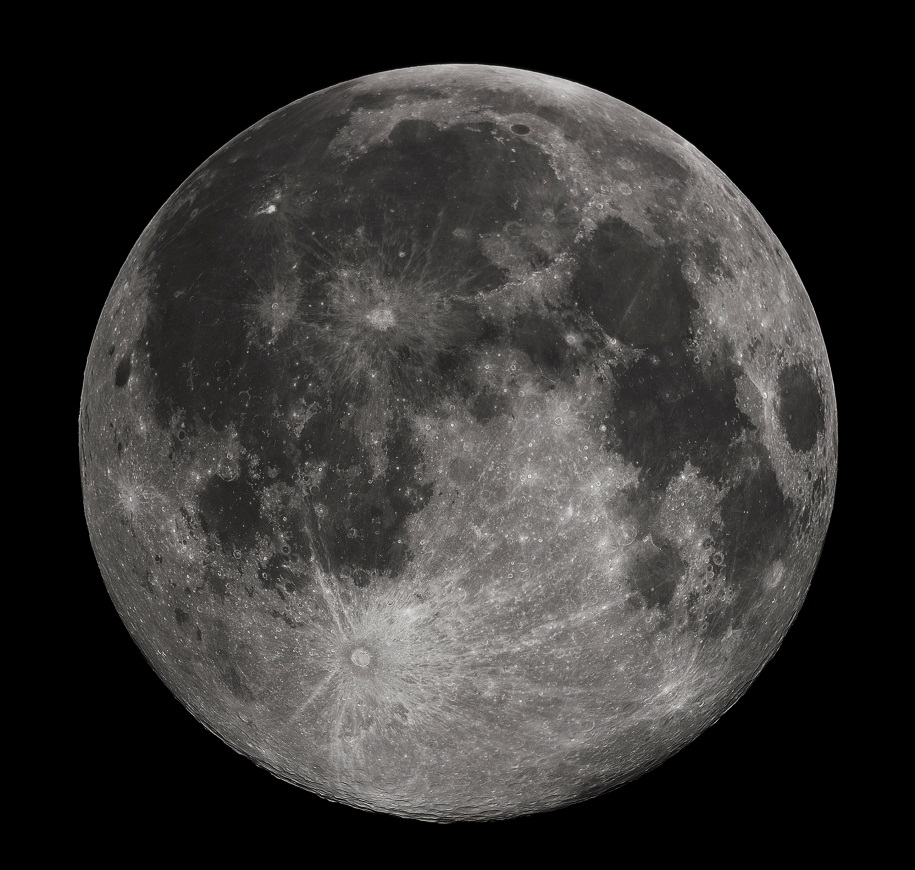The Moon
Click here to download or print this factsheet as a PDF
The Moon
The Moon is the Earth’s only natural satellite, it is estimated to be around 4.5 billion years old and it is the fifth largest Moon in the Solar System.

Faster than a speeding bullet, travelling at a speed of around 1 km a second, the Moon orbits the Earth every 27.3 days at an average distance of 384,400 km. Its orbit is synchronous with the Earth – meaning that as the Moon spins on its axis, at a rate of 27.3 days, so we see the same face at all times.
There have been different ideas on how the Moon was formed but the current most accepted theory is that was from the debris resulting from a large impact between the Earth and another body the size of Mars.
The Moon can be seen to be made up of Light and Dark regions. Through binoculars or a small telescope more detail can be seen. The Light regions are the ancient highlands and are over 4 billion years old. They are mountainous areas, with the tallest mountain being 4700 metres tall.
The Dark areas are the Lowlands and are called Maria, which is Latin for "seas" as this is what earlier astronomers thought that they looked like. These low-lying areas were filled with dark solidified lava from earlier eruptions. They are between 3.1 and 3.8 billion years old.
Impact craters can be seen covering the surface – these are from comets and asteroids. As there is no atmosphere on the Moon they are very well preserved.
In 1959, the Soviet Union was the first to land an unmanned spacecraft on the surface of the Moon. The first person to set foot on the Moon was Neil Armstrong during the USA’s NASA Apollo 11 mission in 1969, there were a further 5 manned landings until the last in 1972.
Matt Armitage & H.C.O
Weblinks
General moon information, images and stats: solarsystem.nasa.gov/planets
